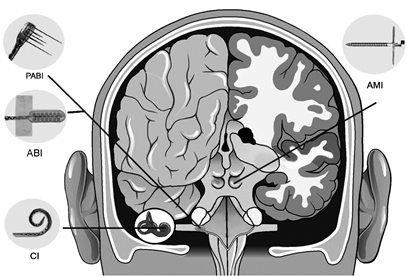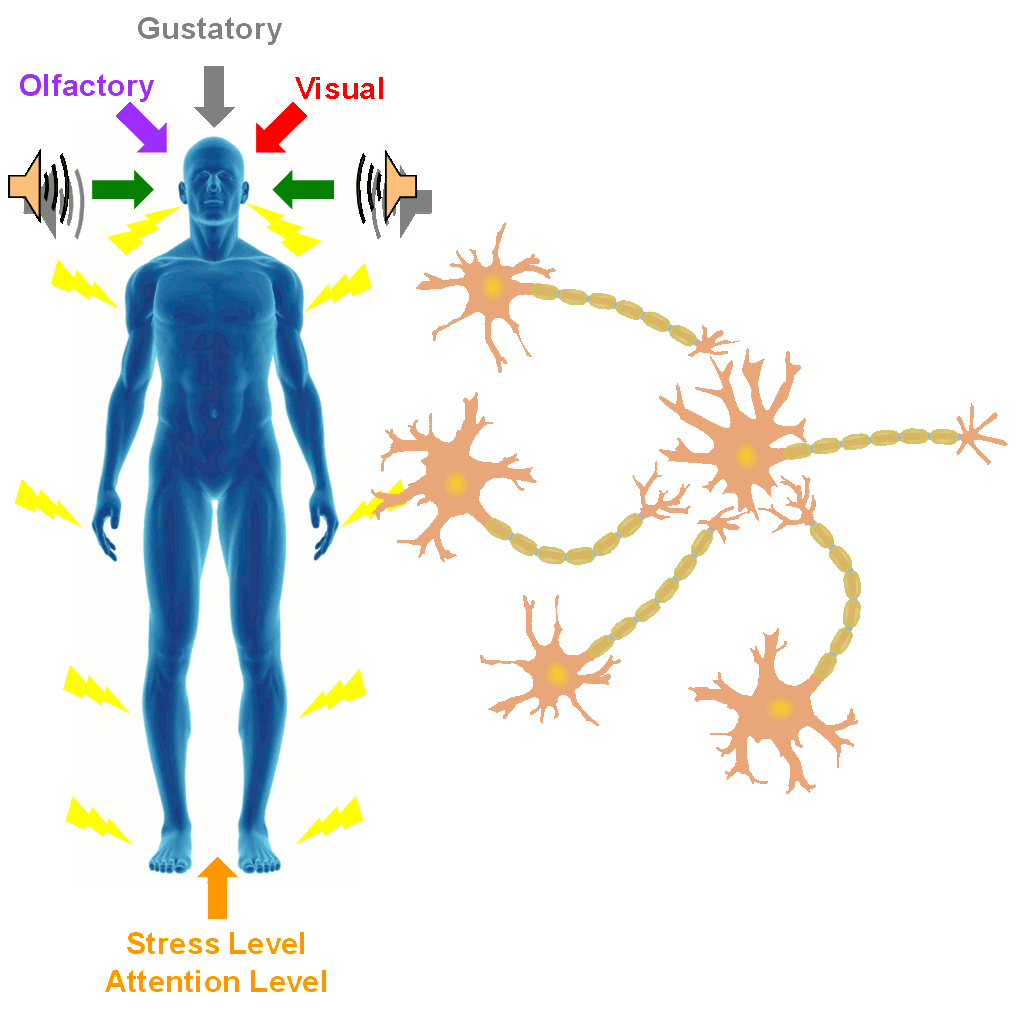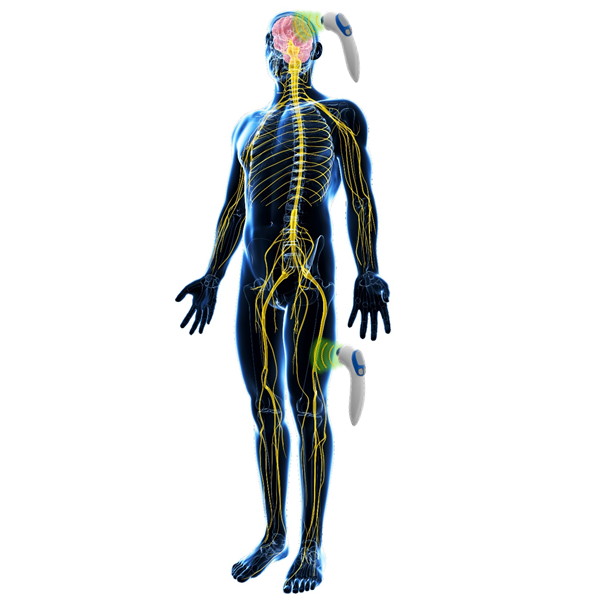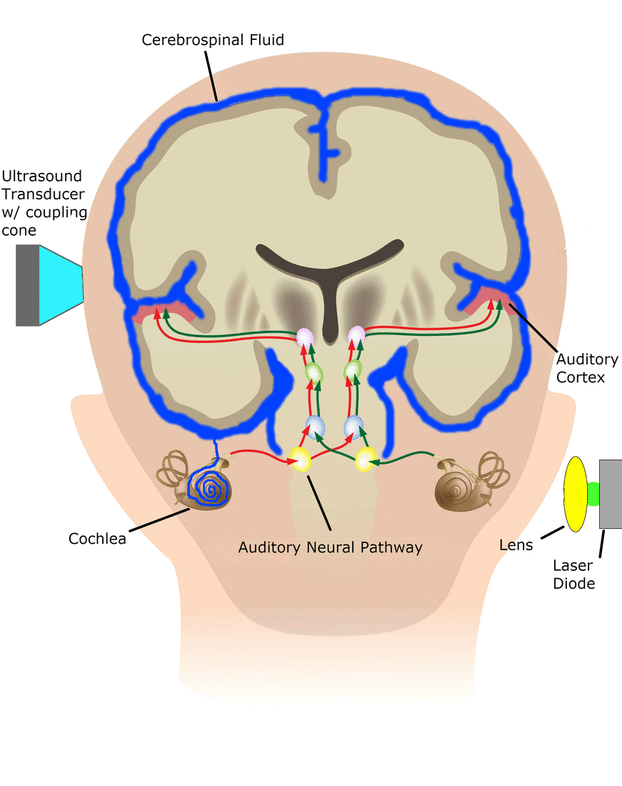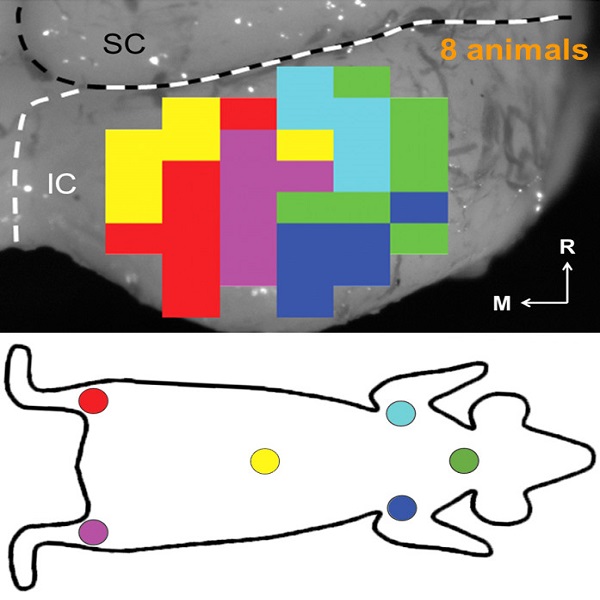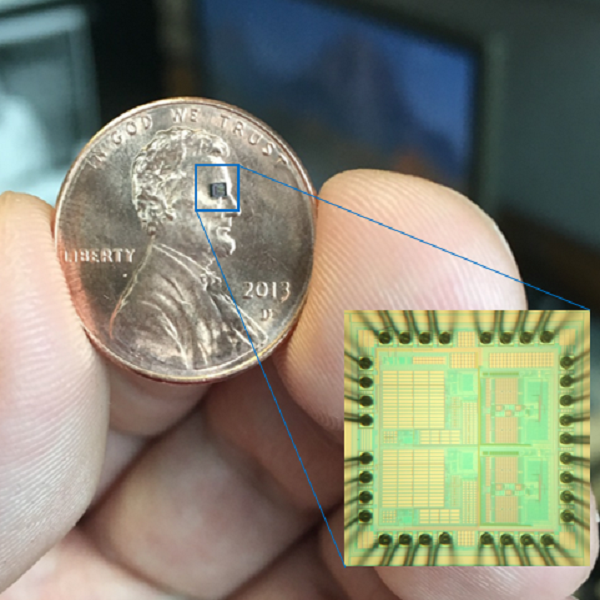Mapping Cross-Sensory Coding of the Brain


Multimodal integration, especially within sensory systems, is the key feature for how we implement noninvasive and targeted neuromodulation via Multimodal Synchronization Therapy (mSync). Understanding how sensory systems are integrated, especially understanding where integration occurs and how different stimuli affect different neurons, can help identify more effective mSync parameters for targeting specific brain regions involved with or driving a neurological condition. For tinnitus treatment, we will target the auditory system with mSync, and one of the major multisensory integration hubs within the auditory system is the Inferior Colliculus (IC). Through electrode mapping experiments across the IC in response to electrical stimulation of different body locations, we found somatotopic trends in the IC, where the body seems to be organized in a head-to-toe fashion from lateral IC to medial IC. By appropriately selecting specific body regions and levels for electrical stimulation, it may be possible to target small areas of the IC, and therefore specific regions of the auditory system, using somatosensory electrical stimulation. Since we have already shown that mSync (e.g., with precisely timed sound and body stimulation) can induce plasticity in the auditory system in guinea pigs, these findings further suggest we may be able to stimulate different body regions to shift coding properties in specific neurons, at least within the IC. We have also been performing mapping experiments in other auditory regions, such as the auditory cortex, in response to somatosensory stimulation to assess if neurons throughout the auditory pathway can be targeted and modulated with somatosensory stimulation to potentially treat tinnitus (i.e., to be able to modulate the necessary neurons driving the tinnitus percept). Similar to the approach for tinnitus treatment, mSync could potentially treat pain that manifests itself within the somatosensory system by applying combined body and sound stimulation (stimulation of other sensory systems could also be possible). Through multiple mapping experiments across the somatosensory cortex in response to sound and/or body stimulation, we have observed several interesting results: (1) acoustic stimulation alone only activates a small percentage of neurons within the somatosensory cortex, (2) acoustic stimulation can modulate most of the somatosensory cortical neurons when combined with body stimulation, and (3) repeated paired sound and body stimulation leads to long-term plasticity in the somatosensory cortex. Overall, these mapping experiments have begun to reveal that the different sensory systems are densely interconnected and they can significantly modulate each other, even if they may not individually drive excitatory responses across other sensory systems. Therefore, mSync may provide a way to modulate specific neurons within different sensory systems depending on which sensory inputs are activated and the timing between those inputs, in which long-term plasticity is achieved through repeated activation. Long-term modulation in the auditory system could potentially treat tinnitus, while long-term modulation in the somatosensory system could potentially treat various forms of somatic pain.
Funding: MnDRIVE Brain Conditions Innovations Grant, MnDRIVE Fellowship Program, NSF IGERT Graduate Fellowship Program, SONIC Lab Discretionary Funds
